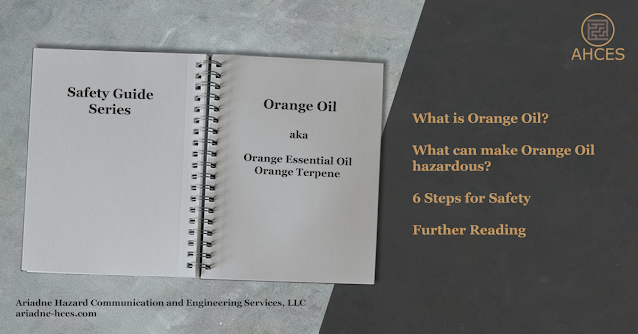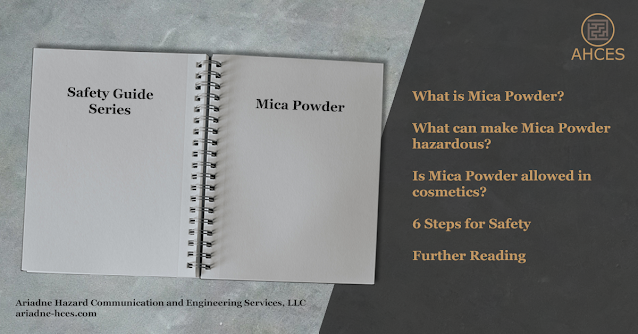Formaldehyde Safety Guide
What is Formaldehyde?
Formaldehyde, also known as formalin, methanal, and methyl aldehyde, is an aldehyde, a type of volatile organic compound. It is a natural metabolic byproduct, but in larger concentrations can be toxic, and is used as a fumigant, disinfectant, and fungicide. It also has other uses in industrial production of products such as paper, plywood, and some resin and as a preservative in some household goods including antiseptics and other pharmaceuticals.
Formaldehyde has the CAS Number 50-00-0.
Notable Properties of Formaldehyde
Under normal room temperature and atmospheric pressure conditions, formaldehyde is a colorless gas. It has a highly pungent odor.
When formaldehyde is dissolved in water, forming an aqueous solution, it is known as formalin. Formalin is a colorless liquid. It has the same highly pungent odor as gaseous formaldehyde.
Formaldehyde readily self-polymerizes, most commonly forming the solid paraformaldehyde.
What Makes Formaldehyde Hazardous?
There are multiple hazards associated with formaldehyde. Formaldehyde is an irritant, with low level exposure causing skin, eye, and respiratory system irritation. Formaldehyde is also toxic, with exposure to greater concentrations capable of causing damage to the respiratory system, and ingestion being potentially fatal.
Formaldehyde is classified as a Group 1 Agent by the International Agency for Research on Cancer, meaning that is it known as carcinogenic to humans. It is a known cause of nasopharynx cancer and leukemia and has association with other cancers of the respiratory system.
Formaldehyde Frequently Asked Questions
Are formaldehyde fumes toxic?
Yes, formaldehyde is toxic as a gas, as well as a liquid. If formaldehyde containing solids, including paraformaldehyde or formaldehyde resins, break down or otherwise off-gas formaldehyde, that released gas is also toxic.
Should I be worried about formaldehyde?
For many individuals, exposure to formaldehyde is limited to nonexistent.
The Agency for Toxic Substances and Disease Registry, a part of the U.S. Department of Health and Human Services, has a Minimal Risk Levels (MRLs) for Hazardous Substances. Formaldehyde is one of the listed substances. This list indicates for a given material, exposure route, and duration of exposure, what amount of exposure has minimal risk to human health.
For those working in an industry where formaldehyde is used in larger quantities, such as a component of resins or as a fumigant, proper safety precautions should be taken to limit the exposure to larger quantities of formaldehyde. The National Institute for Occupational Safety & Health (NIOSH) has a recommended exposure limit of 0.016 ppm for a 10 Hour Time-Weighted Average and a 0.1 ppm 15 Minute Ceiling Value.
6 Steps for Safety
Step 1: Read the Warnings
When working with a product for the first time, always read all the safety documents first. This includes safety data sheets, which should be provided by the manufacturer or importer of the formaldehyde-containing product. There may also be an OSHA chemical label or Consumer Protection label on the packaging of the formaldehyde product. These document all contain important information on the hazards of the product and instructions on how to best mitigate those hazards.
Different compositions in different products may cause additional hazards to be present beyond the properties of pure formaldehyde or formalin. Be sure to familiarize yourself with the differences between separate formaldehyde products.
Step 2: Prepare Your Workspace
Creating a safe workspace, sometimes referred to as engineering control, is a key component of working safely with any potentially hazardous substance.
Having adequate ventilation is very important when working with formaldehyde, either as a gas or in a formula that may off gas.
Due to the hazards associated with eye damage, it is important to have the ability to irrigate the eye sufficiently in the event of exposure. Washing out the eyes can be done with an eyewash station. It is possible to purchase an attachment to a skink which will redirect water toward the eyes when opened. It is also possible to purchase sterile saline bottles designed for use as a portable eyewash.
Step 3: Gather Your PPE
When using formaldehyde in liquid form, also known as
formalin, the following PPE is recommended depending on quantity being used and
other engineering measuring being used.
- Eye Protection
- Safety goggles with a sealing surface around the eyes are important to prevent splashes from reaching the eyes.
- Respiratory Protection
- A respirator with an appropriate filter for organic vapors should be used to prevent the inhalation of gaseous formaldehyde.
- Gloves and Skin Protection
- Wear properly fitted gloves and coveralls to prevent skin contact and contact with clothing.
Step 4: Clear Your Workspace
Having a clear workspace is an important part of safety. Clutter can cause accidents and can obscure spills or container leaks.
This is also a good time to double check any engineering controls, including eye wash stations, are working and ready accessible.
If you are working in a shared space, make any other people around can also remain safe while formaldehyde is in use. Due to the hazards of formaldehyde, it should not be used around children or pets.
Step 5: Do The Work
Due to the toxicity and carcinogenic properties of formaldehyde, working with the substance should be minimized when possible.
Work can be done safely with appropriate engineering controls, PPE, and observance of permissible exposure limits.
Step 6: Clean Up
For spilled formalin or other liquid formaldehyde solutions, use non-combustible absorbent material such as sand to absorb the spill. This can be placed in containers for later disposal.
Be sure to dispose of any waste in accordance with local regulations.
Further Reading
The National Library of Medicine has a PubChem article on Formaldehyde. The Agency for Toxic Substances and Disease Registry also has further resources on formaldehyde, including a frequently asked questions pamphlet and emergency responder resources
Check out the Safety Guide Series Hub for more safety guides.
Sources Cited
Agency for Toxic Substances and Disease Registry (2024, Feb 10). Formaldehyde. ATSDR. Retrieved September 30, 2024, from https://wwwn.cdc.gov/TSP/substances/ToxSubstance.aspx?toxid=39
Agency for Toxic Substances and Disease Registry (2024, July 8). Minimal Risk Levels (MRLs) for Hazardous Substances. ATSDR. Retrieved September 30, 2024, from https://wwwn.cdc.gov/TSP/MRLS/mrlslisting.aspx
International Agency for Research on Cancer (2024, September 12). List of Classifications. IARC Monographs on the Identification of Carcinogenic Hazards to Humans. Retrieved September 30, 2024, from https://monographs.iarc.who.int/list-of-classifications
National Center for Biotechnology Information (2024). PubChem Annotation Record for FORMALDEHYDE, Source: Hazardous Substances Data Bank (HSDB). Retrieved September 30, 2024 from https://pubchem.ncbi.nlm.nih.gov/source/hsdb/164.
National Center for Biotechnology Information (2024). PubChem Compound Summary for CID 712, Formaldehyde. Retrieved September 30, 2024 from https://pubchem.ncbi.nlm.nih.gov/compound/Formaldehyde.
National Oceanic and Atmospheric Administration (n.d.). Formaldehyde. CAMEO Chemicals. Retrieved September 30, 2024, from https://cameochemicals.noaa.gov/chemical/22034
Occupational Safety and Health Administration (n.d.). 1910.119 App A - List of Highly Hazardous Chemicals, Toxics and Reactives (Mandatory). OSHA.gov. Retrieved September 30, 2024, from https://www.osha.gov/laws-regs/regulations/standardnumber/1910/1910.119AppA





Comments
Post a Comment